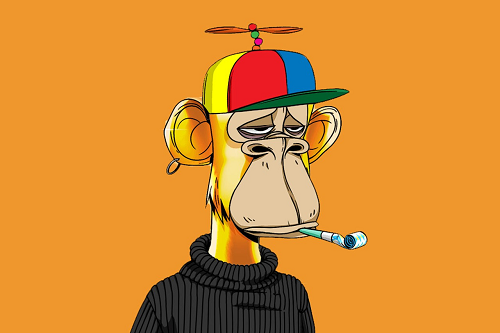SOCIAL
Twitter Previews Coming NFT Display Options for Profile Images

After sharing an initial preview of its coming NFT display option last month, Twitter has now shared some new insight into its in-development NFT showcase process, which will eventually enable Twitter users to share their NFTs with direct connection back to the ownership status of each.
As you can see in this example, posted by Twitter engineer Ethan Sutin, the new Twitter NFT display process will enable users to connect their NFT details into their image feed, which will then let profile visitors look up the info on any NFT that you use, providing direct assurance of ownership, and leaning into the rising NFT movement.
Which, confusingly at times, is rapidly rising, with people ‘investing’ thousands, even millions of dollars into still drawings that don’t really seem like art in the traditional sense.
In all honestly and transparency, I don’t really get the whole NFT thing.
I mean, I get the concept, and I understand the opportunities that they can create for digital artists, and the expansion of art investing, which could end up providing a lifeline for many creators who are looking to spend more time on their craft.
But when I see that this image of a cartoon monkey sold for the equivalent of $3.4 million, it does hurt my head a little bit.

This is a rare NFT from the Bored Ape Yacht Club collection – rare because the ape is gold, and there are apparently not many apes in this color variant.
But it’s just a picture, right? And really, not a very good one, from a craft perspective. That’s not to denigrate the artists involved, but when you consider what’s traditionally considered to be fine art that would command such a high price, and the careful brush strokes and techniques used to create those timeless images – the sheer time and effort involved in painting, say, the Mona Lisa or Monet’s waterlilies. By comparison, this hand-drawn picture doesn’t really match up. Right?
Of course, art is subjective, and whether an individual likes a piece or not is irrelevant, because as long as there’s a person, or people, willing to pay for it, the value is what the market dictates. But I see this with most of these NFT images, craft-wise, that they’re not much better than what a teenager might doodle on their notepad when they’re bored in class.
Maybe that, in itself, is part of the appeal, but I struggle to imagine that in ten or twenty years’ time, that these artworks will still be highly valued, which makes the ‘investment’ element questionable in my mind.
The other aspect that can be confusing is NFT ownership – how do you ‘own’ a digital art work that anyone can re-use, or re-share, with limited legal recourse?
For paintings and physical art, you have the actual piece, the canvas that the artist touched and worked on, and there’s only one in existence. But for digital art, there is no physical copy, so you ‘owning’ this piece and me, for example, owning a fake is actually no different at all, there’s no differentiation in what the art work actually is (though depending on the purchase agreement, the owner may be able to stop re-productions).
That’s one aspect that Twitter’s new NFT display could help to address – by providing the full details of each NFT, users would technically only be able to display art that they officially own, or it would be totally transparent in the case that they didn’t. This is arguably the most important element of this new project, and it could help ensure that artists get paid for their work, and the usage of such, by exposing those looking to fake it for NFT community cred.
Which is a real thing. The NFT movement is gradually taking over social media, and as more profile images switch to cartoonish depictions, of various form, it is definitely worth the platforms themselves looking into how they can best facilitate such, and fuel further engagement to lean into the next big art shift.
Which NFTs definitely are, whether I get them or not. Respected art house Southeby’s has already made NFTs a key focus, and as more collectors get involved in the NFT community, the movement continues to grow, and looks set to get much, much bigger as we move into the metaverse.
As such, Twitter’s new NFT project makes sense – and while I don’t know that I’ll ever get why people are paying hundreds of thousands of dollars for images like this hand-drawn parrot by Gary Vaynerchuck.

Like, who has that kind of cash and will this really appreciate in value?
Regardless of my misgivings, there’s very clearly significant opportunity here, which could spark whole new engagement and growth opportunities in social apps.
